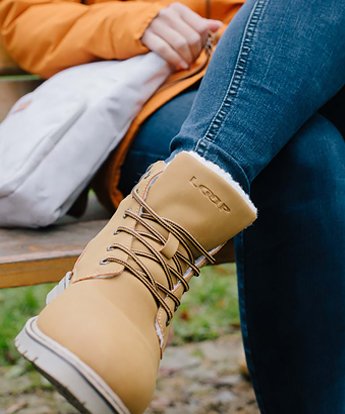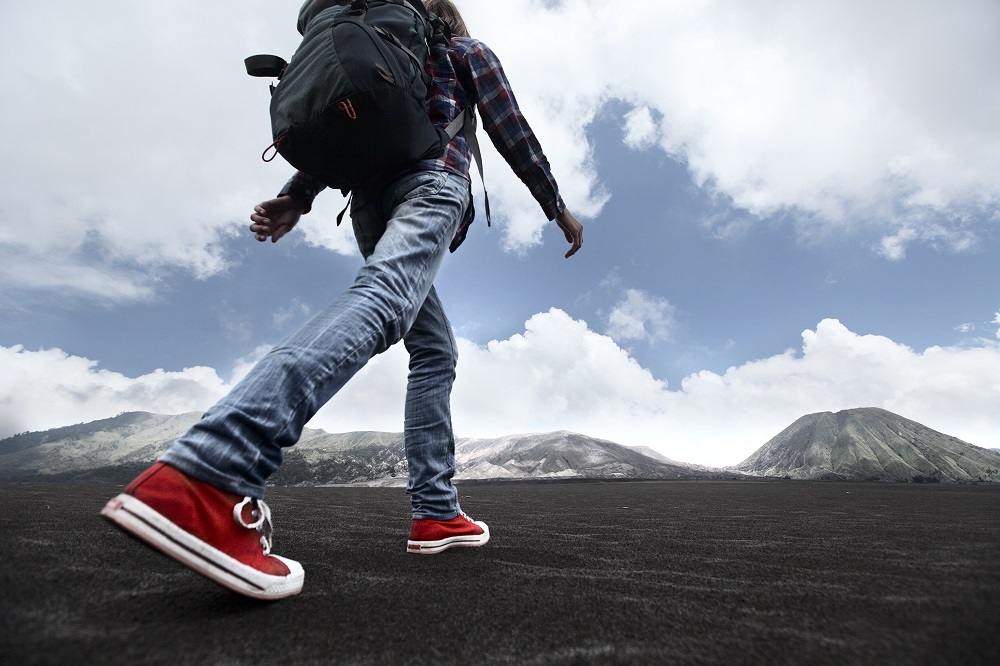Caring for shoes - how to take care of leather shoes and synthetics
When buying shoes, you want them to last. Can you make the right choice? Do you know how to take care of them? And do you take care of them? Learn how you take care of shoes that will serve you as long as possible.

Have more shoes for various activities
The first thing to think about is what shoes you really need and where you want to go in them. There is no universal shoe suitable both for a concert, hiking and a beach. It is always good to have more shoes, each pair for a different activity. If you use the shoes for other activities than those for which they were made, you will wear them out = throw them out probably much sooner.
The size of shoes is important!
So if you know the purpose of the shoes, now you need to choose the right size. It seems easy, but sometimes the choice is very wrong. Feet may get slightly swollen during the day, so it is recommended to buy shoes in the afternoon. As soon as you you bring them home, put them on again. If your shoes still fit well, you have won. If not, return them.
The foot must be fixed well in the shoe, otherwise the shoe will get deformed. Movement of the foot inside the shoe damages the lining and the insole. On the other hand, the shoes should not be too tight.
The material is important when choosing shoes
The material, from which shoes are made, is also worth of attention. You have to take more care of some shoes than of others. As an example, we can mention leather, as you must apply shoe polish on it, unlike synthetics. A proper care of shoes is a prerequisite for their longevity. Do not underestimate this advice.
Vibrant colours do not last forever.
Intense colours fade over time. On the other hand, white colour tends to turn yellow. Leather shoes may stain your socks because of internal moisture.

How to take care of shoes made of leather, synthetics and other materials?
-
- Smooth leather – you must continuously and diligently care for smooth leather. Dirt should be removed with a dry or damp cloth and then dry the shoes. Then, apply a special cream and polish the shoes. Leather is definitely not waterproof, so you must impregnate the shoes.
- Nubuck and velour - What's the difference? Nubuck is leather with a honed front, velour with a honed back side. A popular name for velour is suede. Do not use water on them, they do not like it much. It is better to use a rubber brush to remove impurities. To revive the colours, use a special colourless or colour spray. Do not polish suede or nubuck! On the other hand, impregnation is very important, because it will enhance the water repellency and resistance against dirt.
- Polished leather – wipe polished leather with a damp cloth and apply a special product for this type of leather.
- Synthetic materials - All you need is a damp cloth. After cleaning, dry the shoes and treat them with a product designed to treat synthetics.
- Textile – Clean textile shoes with a dry brush. Use a damp cloth for larger impurities. Never wash the shoes. Remove grease stains with detergents for textile. Treat the shoes with impregnation designed for textile.
- Shoes with a membrane – Dry the shoes with a waterproof membrane with a damp cloth or brush. Let them dry and only then apply impregnation.
- Neoprene shoes – Rinse neoprene shoes thoroughly with water and dry them. You can use a soap solution and a sponge for larger impurities.
8 tips for increasing the life of the shoe
Stick to these tips and you will enjoy your shoes for many seasons.
Put the shoes on with the use of a shoehorn – Use a shoehorn especially for closed types of shoes. Do not put the shoes on by force, otherwise you could destroy the heel part. If the shoes have shoes laces or any other type of fasteners, loosen them first.
-
- Let the shoes dry up and air them out - The foot in the shoe sweats, whether you like it or not. It is important to let the shoes dry up and air them out properly, even after a short walk. If they get wet because of rain, stuff them with newspapers and let them dry up. Never put your shoes too near sources of heat, because high temperatures can damage them. Natural drying takes longer, but who waits, wins – and can still wear the shoes.
- Get shoe stretchers - and put them into the shoes. They will help the footwear to retain its original shape.
- Alternate the shoes - Do not wear one and the same pair of shoes every day. Give them time to rest, in order to save the material. Likewise, leave them plenty of time to dry out, see the point 2.
- Respect the purpose of the footwear - Shoes may be destroyed by an inappropriate use, and the cause of this does not necessarily have to be a manufacturing defect. Please note that the lifetime of the shoes does not equal the warranty period. It always depends on how you take care of the shoes, how you treat them and how you use them.
- Impregnate the shoes - Impregnate the shoes before the first use. This will increase their water repellency and resistance to dirt. Afterwards, apply impregnation as necessary. You should impregnate more often after the use in rainy weather, it's worth it. The more time you dedicate to periodic maintenance, the longer will be the life of the shoes. Especially in winter, shoes suffer from icing salts and other de-icing materials that cause white spots on the shoes. Clean the shoes and treat them with impregnation much more frequently.
- Do not wash the shoes - Unless explicitly allowed by the manufacturer, forget any washing of the shoes. It is perhaps easier than to take a cloth and clean the shoes manually, but washing can irreparably damage the shoes.
- Replace worn parts with new ones - Insoles, heel parts and other exposed parts may need to be replaced from time to time. Do it as soon as possible to prevent damage to other parts.
